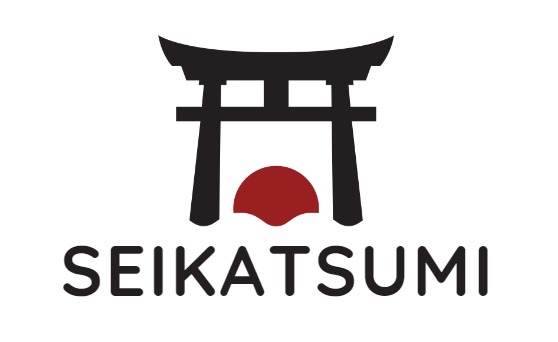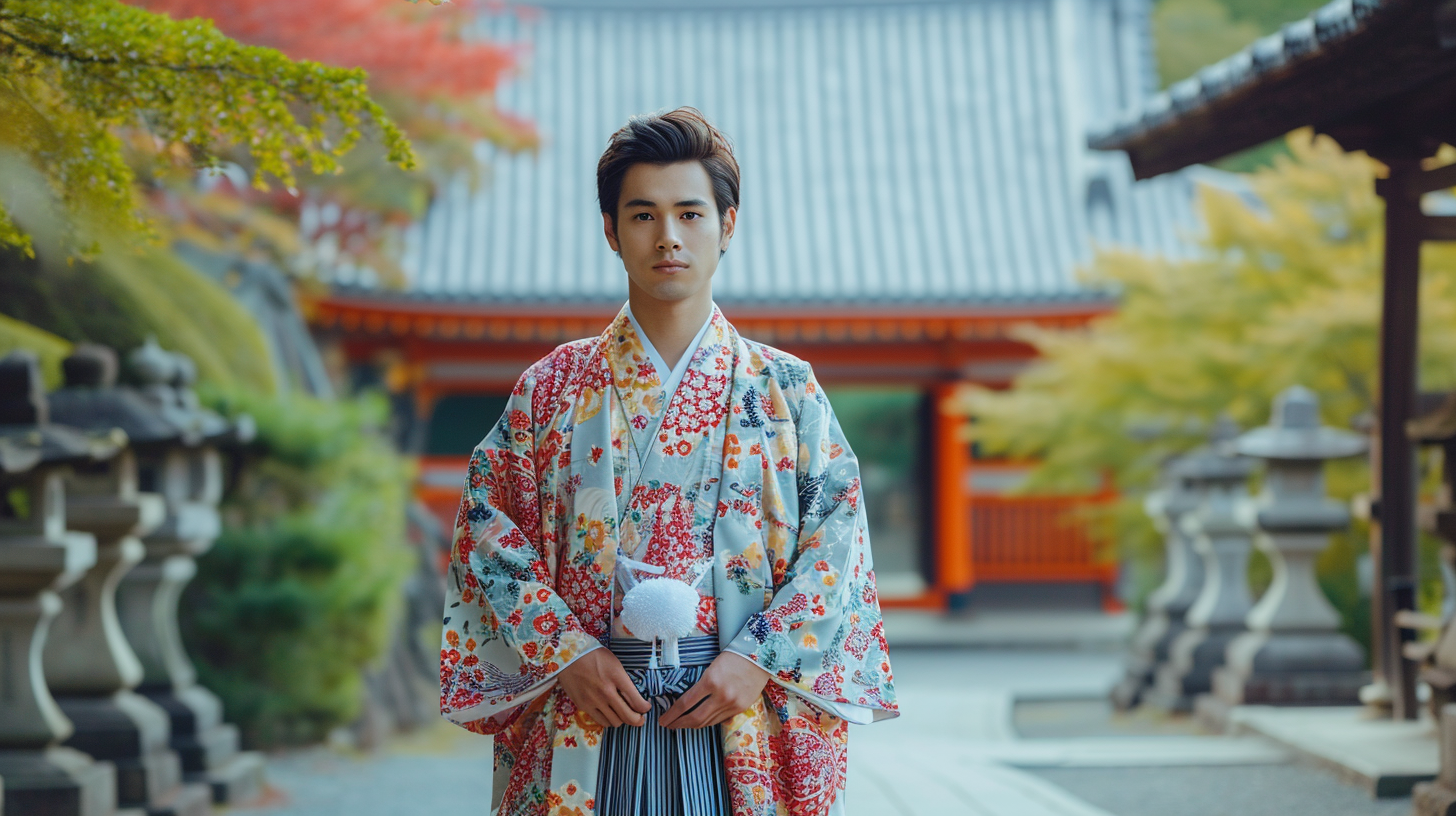Are you also enthusiastic about traditional japanese fashion? Me too!
And I know how long it takes to find the best occasions and clothes. that’s why I’ve done hours of research so you don’t have to!
I’m so excited to share with you all about the traditional Japanese clothing for men! Japan has a rich cultural heritage that is reflected in their clothing.
So what are you waiting for? Come on! Start scrolling 😉
History of Japanese Traditional Clothes Men
As a country with a rich cultural history, Japan has a unique and fascinating tradition of clothing.
Japanese Traditional Clothes Men reflects this history and has evolved over time to reflect the cultural and societal changes that have occurred.
Explore the historical significance of Japanese traditional clothing for men, including the Edo period fashion, Meiji era transformations, and cultural preservation!
Edo Period

The Edo period, which lasted from 1603 to 1868, was a time of relative peace and prosperity in Japan.
During this period, the samurai class became increasingly wealthy and powerful, and their clothing reflected this status. Men’s clothing during this period was characterized by the use of luxurious fabrics, such as silk and brocade, and intricate embroidery and embellishments.
Samurai wore a distinctive type of kimono called a “kataginu,” which featured a sleeveless jacket worn over a longer kimono. This style of dress was designed to allow for ease of movement while still maintaining a sense of formality and elegance.
Meiji Era Transformations

The Meiji era, which began in 1868 and lasted until 1912, marked a period of significant change in Japan.
During this time, Japan underwent a rapid modernization process, and traditional clothing began to fall out of favor. Western-style clothing became increasingly popular, and many men began to adopt this style of dress.
However,Japanese Traditional Clothes Men continued to be worn for formal occasions and ceremonies.
Cultural Preservation of Japanese Traditional Clothes Men
Despite the shift towards Western-style clothing, Japanese Traditional Clothes Men has continued to be an important part of Japanese culture.
Today, many people still wear traditional clothing for festivals, ceremonies, and other cultural events. In recent years, there has been a renewed interest in traditional clothing, and many designers are incorporating traditional elements into their modern designs.
This trend has helped to preserve and promote Japanese Traditional Clothes Men for future generations.
Kimono
As someone who loves Japanese Traditional Clothes Men, I find the kimono to be one of the most beautiful and iconic garments. Kimonos are a type of traditional Japanese clothing that have been worn for centuries.
They come in many different styles, colors, and patterns, and are worn by both men and women.
Kimono Types

There are several types of kimonos, each with its own unique style and purpose. The most common types of kimonos include:
- Furisode: A formal kimono worn by unmarried women, featuring long sleeves that flow down to the ankles.

- Tomesode: Another formal kimono, typically worn by married women. It features shorter sleeves and a design that covers only the lower half of the garment.

- Houmongi: A semi-formal kimono that can be worn by both married and unmarried women. It features a design that wraps around the entire garment.

- Komon: A casual kimono that can be worn by both men and women. It features a repeating pattern throughout the garment.

Formal Wear
Kimonos are often worn for formal occasions such as weddings, tea ceremonies, and other traditional events.
Formal kimonos are typically made from silk and feature intricate designs and patterns. The furisode and tomesode are the most formal types of kimonos and are typically worn by women.
Casual Kimono
Kimonos are also worn as casual clothing, especially during the summer months. Casual kimonos are typically made from cotton or other lightweight materials and feature simpler designs and patterns.
The komon is the most common type of casual kimono and can be worn by both men and women.
Japanese Traditional Clothes Men: Hakama
As I delve into the world of traditional Japanese men’s clothing, I can’t help but be excited to talk about the Hakama. This unique garment is often worn during formal events, martial arts, and other special occasions.
Hakama Styles

Hakama comes in two styles: the undivided Hakama, also known as andon bakama, and the divided Hakama, which is called umanori.
The andon bakama is a skirt-like garment that is often worn by women, while the umanori is more common for men. The umanori has a unique design that resembles pants, but with a skirt-like appearance.
Hey you! Are you interested in more fashion? Then be sure to check out our top fashion articles! You definitely can’t miss it!
50+ Japanese Winter Fashion Men Outfits You’ll Love this Winter
Japanese Winter Jackets Women: 40+ Best Chic Warmth and Styles for the 2024 Season!
Ceremonial Use
Hakama is often worn during formal events such as weddings, funerals, and tea ceremonies.
In these events, the Hakama is paired with a kimono and is worn by both men and women. The Hakama is also worn by Shinto priests during religious ceremonies.
Martial Arts

Hakama is also commonly worn in martial arts such as Kendo, Aikido, and Iaido. In these martial arts, the Hakama is worn to symbolize the wearer’s commitment to the art and their dedication to mastering it.
The Hakama can also be used to hide the movements of the wearer’s feet, making it harder for opponents to anticipate their next move.
As someone who loves Japanese Traditional Clothes Men, I am excited to share with you about Yukata, a popular summer garment for men.
Yukata is a casual version of the kimono, and it’s typically made from lightweight cotton or linen, making it perfect for hot and humid summer days.
Summer Festivals
Yukata is a popular choice for men to wear during summer festivals, also known as matsuri.
These festivals are held all over Japan, and they are a great way to experience Japanese culture. Men usually wear Yukata with a simple obi (sash) tied around their waist.
Yukata is comfortable and easy to move around in, which is perfect for walking around and enjoying the festivities.
Design and Material
Yukata comes in a variety of designs and colors. Some Yukata designs are intricate and eye-catching, while others are simple and understated.
Men’s Yukata usually have more subdued colors and patterns compared to women’s. The material used for Yukata is also important.
As mentioned earlier, Yukata is typically made from lightweight cotton or linen, which makes it breathable and comfortable to wear.
Accessories
As a lover of Japanese Traditional Clothes Men, I can attest to the fact that accessories play a crucial role in completing the look.
Here are some of the accessories that I find essential for any man looking to rock traditional Japanese clothes:
Geta Footwear

Geta is a type of Japanese Traditional Clothes Men footwear that is perfect for completing the look when wearing a kimono or yukata. These sandals are made of wood and have a distinctive sound when walking.
They are designed to elevate the feet to keep the hems of the kimono or yukata from getting dirty. Men’s geta is typically flat, while women’s geta is raised in the heel.
Haori Jackets

Haori is a type of Japanese Traditional Clothes Men jacket that can be worn by both men and women. It is typically worn over a kimono or yukata and can be tied with an obi belt.
Haori jackets come in a variety of colors and designs, making them a versatile accessory for any traditional Japanese outfit.
They are perfect for keeping warm during the colder months, making them an essential addition to any winter wardrobe.
Obi Belts

Obi is a type of belt that is used to tie Japanese Traditional Clothes Men, such as kimono and yukata.
These belts come in a variety of styles and designs, making them a great way to add some personality to your outfit. Men’s obi belts are typically narrower than women’s obi belts and come in more muted colors.
Modern Adaptations
As with any traditional garment, Japanese traditional clothing men has evolved with time, and modern adaptations have become increasingly popular.
Contemporary Fashion

ContemporaryJapanese Traditional Clothes Men is a fusion of traditional and modern styles, often incorporating bold colors, streetwear elements, and playful accessories.
Brands like A Bathing Ape, Comme des Garçons, and Neighborhood have gained a following worldwide for their unique take on Japanese fashion.
One example of a modern adaptation of traditional Japanese clothing is the “hanten” jacket.
Originally worn by firefighters in the Edo period, hanten jackets are now a popular winter garment for men. They are made from thick, padded fabric and feature a distinctive criss-cross pattern.
Pop Culture Influence

Japanese pop culture has had a significant influence on modern fashion, and traditional clothing is no exception.
Many anime and manga series feature characters wearing Japanese Traditional Clothes Men, which has helped to popularize these garments among younger generations.
One example of a traditional garment that has been adapted for pop culture is the “hakama” pants.
Originally worn by samurais, hakama pants are now a popular choice for cosplay and other pop culture events. They are often paired with a “haori” jacket, which has a high collar and wide sleeves.
Dressing Etiquette
As a foreigner, it is essential to be aware of the proper way to wear Japanese Traditional Clothes Men.
Proper Wearing
When wearing traditional Japanese clothing, it is important to keep in mind the proper way to wear each piece. For instance, a kimono should be worn with the left side over the right.
The opposite is reserved for the dead. On the other hand, a yukata is worn with the right side over the left.
When wearing a haori, a traditional Japanese jacket, it should be worn over the kimono or yukata with the collar folded down. The sleeves should be slightly longer than the kimono or yukata sleeves.
Layering Techniques
Layering is an essential part of Japanese fashion, especially during the winter months. Layering involves wearing multiple garments on top of each other to keep warm.
The most common layering technique is to wear a haori over a kimono or yukata. Another popular technique is to wear a nagajuban, a type of undergarment, under the kimono or yukata.
This helps to keep the kimono or yukata clean and also adds an extra layer of warmth.
Preservation and Care
As a lover of traditional Japanese clothing, I always make sure to take proper care of my garments to ensure their longevity.
Here are some tips on how to preserve and care for your Japanese traditional clothes for men:
Storage
When storing your Japanese traditional clothes, it is important to keep them in a dry and cool place. Avoid direct sunlight and damp areas, as they can cause damage to the fabric.
I recommend using a garment bag or a storage box to protect your clothes from dust and insects.
Cleaning

It is essential to take extra care when cleaning your Japanese Traditional Clothes Men.
I suggest hand-washing them in cold water with a mild detergent.
Avoid using bleach or harsh chemicals, as they can damage the fabric. After washing, gently squeeze out the excess water and hang your clothes to dry in a shaded area.
Ironing
Ironing your Japanese traditional clothes requires a bit of knowledge and technique. It is important to use a low heat setting and a pressing cloth to avoid damaging the fabric.
I recommend ironing your clothes while they are still slightly damp, as this will make it easier to remove wrinkles.
My own opinion
I find the art and style of traditional Japanese clothing truly fascinating. The meticulous detail and elegance of these garments, especially the ones in shades of blue adorned with exquisite embellishments, captivate me.
They embody a rich cultural heritage and aesthetic that I deeply admire. However, despite my admiration for these traditional attires, I do not wear them in my daily life.
That said, I am a big fan of their modern interpretation. I occasionally enjoy wearing these contemporary versions, especially the ones that are simple, in black, and feature aesthetic details.
This modern twist on traditional style blends cultural significance with everyday practicality, making it a unique and enjoyable way to celebrate the heritage in a more subtle, everyday manner.

Frequently asked Questions
What are traditional Japanese clothes for men called?
Traditional Japanese clothes for men are primarily known as “Kimono.” Another common traditional attire is the “Yukata,” which is a more casual and lighter version of the Kimono.
How is a Kimono traditionally worn?
A Kimono is wrapped around the body, left side over right, and secured with a sash called an “Obi.” It’s often worn with traditional socks called “Tabi,” and wooden sandals known as “Geta” or “Zori.”
Are there any specific occasions when men wear traditional clothing in Japan?
Men commonly wear traditional clothing during festivals, weddings, tea ceremonies, and other cultural or family events.
If you liked this blog article about Japanese Traditional Clothes Men, don’t forget to follow us on Pinterest so you don’t miss any more tips.
Let us know, which of the above ist your absolute favorite outfit!








